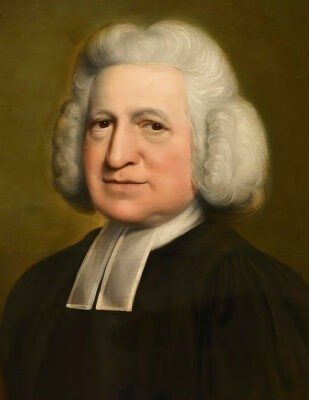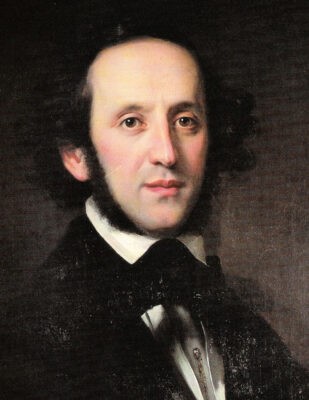The Story Behind: Hark! The Herald Angels Sing

In 1739, prolific hymn writer Charles Wesley penned a Christmas hymn titled “Hark How All the Welkin Rings” for his and brother John’s collection, Hymns and Sacred Poems. The opening line referenced the “welkin,” an old English word for the sky or heavens, ringing with joyful praise for the newborn king. First published under the title “Hymn for Christmas Day”, the somber, sober tune paired with the hymn of 10 stanzas failed to gain much traction. Over the next decades, Wesley’s hymn underwent various tweaks and changes by other editors, much to the dismay of the protective Wesley brothers.
A Pivotal Lyric Change
In 1753, famed preacher George Whitefield reworked the first line to the familiar “Hark! the herald angels sing.” This marked a pivotal change in the carol’s evolution.
Beyond just replacing the archaic “welkin”, Whitefield’s adjustment shifted the perspective. Wesley’s initial focus was heaven’s chorus glorifying the newborn king. Whitefield reframed it to imagine humanity joining the angelic praise. His version invited singers to lift their voices alongside the herald refrain.
This change allowed worshippers to personally participate in the Biblical narrative. No longer were we just overhearing the angels. Whitefield’s lyrical tweak let us raise our own hallelujahs to the “newborn king,” magnifying the miracle of Emmanuel, “God with us.” The adjusted vantage point from earth to heaven amplified the revelation.
Both Charles and John Wesley likely would have opposed the rewrite, as the brothers discouraged editing their meticulously crafted hymns. Yet Whitefield managed to retain the substance while injecting vigor fitting of the joyful subject. His inspired edit married exuberant tone with solid theology—a potent combination.
The carol was one step closer to the cherished Christmas standard we know today.
Hark! The herald angels sing,
“Glory to the newborn King;
Peace on earth, and mercy mild,
God and sinners reconciled!”
An Unlikely New Melody

In an intriguing twist of providence, the perfect musical match for Wesley’s Christmas text came from an unlikely place: a cantata commemorating a technological innovation. In 1840, esteemed German composer Felix Mendelssohn had written a rousing melody to celebrate the 400th anniversary of Gutenberg’s printing press. Mendelssohn remarked that the stirring tune was fitting for “a national and merry subject,” but unsuitable for sacred words.
Yet this upbeat, vivacious score that was intended to honor the spread of knowledge and ideas would end up underscoring the revelation of the divine made flesh. Just as the printing press transformed access to information, the infant Jesus was himself the Word transformed to dwell among humanity, ushering in radical change.
The Matching of Music and Lyrics
Yet history begs to differ on Mendelssohn’s melodic assessment. In the 1850s, English musician William Hayman Cummings joined Wesley’s lyrics as adapted by Whitefield with Mendelssohn’s rousing melody. The result was the majestic version of “Hark! The Herald Angels Sing” that we cherish today. The pairing was an ironic stroke of genius, blending secular music with a sacred text against the intentions of both original authors.
A Christmas Tradition is Born
Once combined, the carol’s popularity took off in Britain and across the Atlantic. “Hark! The Herald Angels Sing” featured at landmark Christian events like the annual Festival of Nine Lessons and Carols at King’s College, Cambridge. From grand cathedrals to small country churches, voices rang out boldly with the refashioned song of heavenly peace and goodwill.
Theological Depth
Wesley’s original poem exalted the nativity narrative with rich theological insight. The first two lines paraphrased the angelic proclamation in Luke 2:14: “Glory to God in the highest, and on earth peace, good will toward men.” Wesley crystallized the core meaning as “God and sinners reconciled,” reflecting his view of Christ’s birth ushering in the possibility of restored relationship between God and humanity.
The verses give a full doctrinal treatment of the incarnation. Christ is hailed as “late in time behold him come, offspring of a virgin’s womb.” God in flesh is cloaked in humanity to identify with us. Flowery language depicts “the Sun of righteousness” rising “with healing in his wings.” The hymn acknowledges Jesus leaving heavenly glory to offer salvation through taking on human pain and death. For Wesley, sound theology was best sung.
Transforming Secular to Sacred
Of course, the full energetic impact came from pairing Whitefield’s words with Mendelssohn’s score written for a secular city celebration. Somehow the lively, triumphant melodic motifs transcended their original context to gloriously underscore the joy of Emmanuel, God with us.
This unlikely blending of author intentions and settings models how God weaves together disparate threads for His glory. The final product resonates not due to chance or simple nostalgia, but because the lyrics and music work in harmonic symphony to reflect Biblical truth.
An Enduring Reminder of Goodwill
The widespread embedding of “Hark! The Herald Angels Sing” in Christmas consciousness is itself a partial fulfillment of the carol’s lyrics. The prayerful yearning “with angelic host proclaim, Christ is born in Bethlehem” has been echoed by generation after generation. Even secular seasonal festivities are tethered to the sacred source that prompted the herald refrain.
More than any other, this hymn crystallizes Christmas, transporting singers and listeners straight to a hillside outside Bethlehem lit with heavenly glory. The creative fusion of words new and old with sounds expected and unexpected allows us to glimpse truth through the eyes of poet, preacher, and composer. As we lift our voices again this year, may we joyfully proclaim with full fervor the birth of the Savior who brought peace, healing, and reconciliation to all who believe.
Frequently Asked Questions (FAQ)
What is the meaning of the song Hark the Herald Angels Sing?
The meaning of the Christmas carol “Hark! The Herald Angels Sing” is the celebration of Jesus Christ’s birth. The song imagines humanity joining with the angelic chorus in glorifying and worshipping Christ the newborn king. The lyrics paraphrase the announcement of Jesus’ birth found in Luke 2:14.
What does hark mean in the Bible?
The word “hark” in the Bible is an old-fashioned command telling someone to listen or pay attention. It was commonly used in the King James Version to call people’s attention to something important that was being said or instructed. So in the carol, “Hark! The herald angels sing” is calling all people to pay attention to the angels’ proclamation of Christ’s birth.
Download sheet music, chord charts, tracks and multitracks for Hark! The Herald Angels Sing exclusively here at Hymncharts.com and Worshiphymns.com. You won’t find this arrangement on any other websites.


